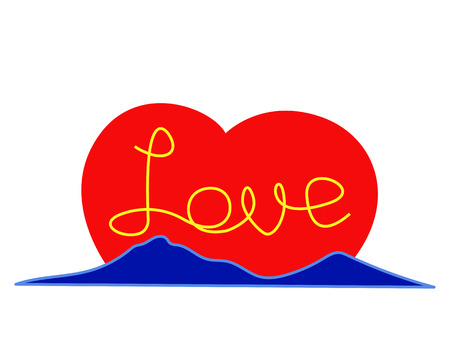Palmistry in a Modern Context
In today’s fast-paced American society, ancient practices like palmistry are experiencing a vibrant renaissance, blending seamlessly with contemporary pursuits of love, career success, and personal growth. Rooted in traditions that date back thousands of years to India, China, and Greece, palmistry—or chiromancy—has long fascinated cultures worldwide. But it is the adaptation of this art within the context of modern Western lifestyles that truly highlights its enduring appeal. In the United States, palmistry has evolved from mysterious parlor entertainment into an accessible tool for self-reflection and empowerment. Its presence can be felt in everything from pop culture references and celebrity endorsements to self-help seminars and wellness retreats. For many Americans seeking insight into their relationships, work-life balance, or authentic selves, reading palms offers a blend of mystical intrigue and practical advice. The lines and mounts on one’s hands become not only symbols but conversation starters—inviting individuals to explore their potentials and navigate life’s challenges through both introspection and action. As self-help trends continue to shape American popular culture, palmistry stands out as a bridge between ancient wisdom and the quest for modern meaning.
2. Understanding the Lines: Love and Relationships
In the quest for authentic connection in modern American society, palmistry offers a unique lens to explore love, romance, and emotional intelligence. At the heart of this exploration is the heart line—one of the most significant lines on the palm—believed to reveal nuances about how we give and receive love, our attachment styles, and our compatibility with others. In a culture where dating apps, personal boundaries, and emotional openness play pivotal roles, understanding the language of our palms can provide insightful context into our romantic lives.
The Heart Line: A Roadmap to Emotional Expression
The heart line typically curves across the top of the palm, starting under the pinky finger (little finger) and extending towards the index or middle finger. Its depth, length, and curvature are interpreted as markers of one’s emotional landscape. For example:
| Heart Line Feature | Modern Interpretation |
|---|---|
| Long & Deep | Emotionally open; values deep connections; likely to seek meaningful relationships over casual ones. |
| Short & Shallow | Tends toward independence; may prefer casual dating or take longer to commit emotionally. |
| Curved Upwards | Expressive and communicative in love; comfortable with vulnerability in relationships. |
| Straight Across | More reserved; approaches relationships rationally; values stability and loyalty. |
Beyond the Heart Line: Additional Markings
Palmists also look for branches off the heart line, crosses, or breaks—each adding layers to relationship dynamics. For instance:
- Branches pointing upwards suggest optimism and multiple opportunities for affection.
- Breaks may indicate periods of heartbreak or transformative relationship experiences.
Palmistry Meets Contemporary Dating Culture
In today’s fast-paced dating scene, where ghosting, texting etiquette, and “situationships” are hot topics, self-awareness is key. Palmistry encourages individuals not only to reflect on their own patterns but also to appreciate diversity in emotional expression among partners. Integrating these insights with modern tools like personality tests or therapy can foster better communication and empathy—essentials for healthy partnerships in an ever-evolving romantic landscape.
![]()
3. Work, Ambition, and the American Dream
Palmistry’s Head Line: Mapping Mindset and Career Trajectory
Within palmistry, the head line is often seen as a mirror of our intellect, decision-making style, and approach to challenges—all vital attributes in a modern American workplace. A long, deep head line may indicate an analytical mind and strong problem-solving skills, echoing the Western value placed on innovation and strategic thinking. Conversely, a shorter or curved line might suggest creativity or adaptability—traits that are increasingly prized in dynamic industries like tech startups or creative agencies. By analyzing your own head line, you can gain insight into whether your natural tendencies align with your current career path or if you might thrive better in an alternative environment that values different strengths.
The Fate Line: Ambition, Opportunity, and Navigating Modern Careers
The fate line traditionally represents the role of external circumstances and ambition in shaping one’s professional journey. In the context of the American Dream—where self-made success and upward mobility are celebrated—the presence, depth, or absence of the fate line can prompt self-reflection about how much control you feel over your career. A strong fate line may correspond to a clear sense of direction and perseverance despite obstacles, while an interrupted or faint line might reflect frequent changes or disruptions—mirroring the gig economy’s realities where adaptability is key. Understanding your fate line can encourage proactive career planning, helping you focus on seizing opportunities rather than waiting for luck.
Work-Life Balance: Integrating Passion with Productivity
Modern Western work ideals emphasize not just achievement but also well-being. Palmistry encourages individuals to interpret both lines together: Do they intersect harmoniously or diverge sharply? Such patterns can symbolize how well your personal ambitions (head line) synchronize with life events and external pressures (fate line). This holistic perspective supports the pursuit of work-life balance—a cornerstone of contemporary American culture—by highlighting areas where recalibration may be needed to prevent burnout or dissatisfaction.
Achieving Personal Goals through Self-Awareness
Ultimately, blending palmistry with modern Western values provides a unique tool for self-discovery. By analyzing your hands through this lens, you can clarify your ambitions, recognize potential roadblocks, and create actionable plans that resonate with both personal fulfillment and the pursuit of the American Dream. Whether you’re seeking your next promotion or contemplating a major career pivot, this integrative approach empowers you to chart a path that honors both tradition and contemporary aspirations.
4. Self-Discovery and Personal Growth
In the fast-paced landscape of modern American life, the journey toward self-discovery and personal growth is both a cultural ideal and an individual pursuit. Palmistry, though often perceived as mystical or old-world, can serve as a unique tool for exploring the complexities of our inner selves. By analyzing the lines, mounts, and shapes of the hand, individuals are offered a structured way to reflect on their strengths, challenges, and potential directions for growth.
One of the core values in American culture is individuality—the belief that each person has a distinct path and identity. Palmistry aligns with this value by emphasizing that every hand is unique, just as every person’s story is unique. Through self-examination using palmistry, people can gain fresh perspectives on their behavioral patterns, emotional triggers, and subconscious motivations. This process encourages the pursuit of authenticity, another cornerstone of Western ideals.
Facilitating Emotional Growth
Palmistry can be especially resonant when it comes to emotional intelligence. By identifying features such as the Heart Line or Life Line, practitioners may guide individuals to recognize how they process emotions or cope with stress. This awareness empowers people to make conscious choices about how they react to challenges—fostering resilience and emotional maturity.
Key Palmistry Features and Their Insights
| Feature | Associated Insight | Potential for Growth |
|---|---|---|
| Heart Line | Emotional openness; relationship patterns | Improved communication; empathy development |
| Head Line | Mental focus; decision-making style | Critical thinking; mindful choices |
| Life Line | Vitality; adaptability to change | Resilience building; embracing transformation |
| Mounts (e.g., Mount of Venus) | Sensuality; approach to pleasure and comfort | Balanced lifestyle; self-care practices |
The Pursuit of Authenticity in the American Context
The American ethos celebrates not only self-improvement but also the courage to live authentically. Palmistry provides a language through which individuals can articulate their desires, fears, and aspirations without judgment. For many Americans who are navigating career changes, relationship transitions, or personal reinvention, palmistry offers both validation and direction. As self-understanding deepens through this practice, it becomes easier to set boundaries, cultivate meaningful relationships, and pursue passions with confidence—echoing the broader cultural narrative that personal growth is not just possible but essential.
5. Integrating Palmistry with Daily Routines
While palmistry may sound mystical, it can be seamlessly woven into the fabric of modern American life to support love, career, and self-discovery. By transforming palm reading from a once-in-a-while curiosity into a mindful habit, you can access deeper insights about yourself and your choices every day.
Start with Morning Intentions
Begin your day with a quick palm check-in. As you sip your coffee or prepare for work, glance at your dominant hand’s lines—especially the heart, head, and life lines. Use what you notice as inspiration for setting an intention for the day. For instance, if your heart line looks strong and clear, remind yourself to approach interactions with openness and empathy.
Mindfulness Practices
Incorporate palmistry into meditation or journaling. During moments of reflection—whether that’s in a yoga class or during evening downtime—take a few minutes to examine your hands. Notice any new markings or changes in your lines. Pair this observation with mindful breathing to ground yourself in self-awareness and foster acceptance of personal growth.
Palmistry in Decision-Making
When facing decisions at work or in relationships, use palmistry as an additional tool for clarity. If you’re weighing two job offers or contemplating a serious conversation with a partner, review relevant mounts and lines (like the Mount of Jupiter for leadership or the Mercury line for communication). Allow these subtle cues to inform—not dictate—your choices, encouraging intuitive decision-making alongside rational thought.
Integrate with Existing Rituals
Palmistry doesn’t have to be complicated or time-consuming. Slip small palm readings into routines you already have: while waiting in traffic, during lunch breaks, or before bedtime. Make it social by inviting friends or family to share insights about their own hands at gatherings. By normalizing palmistry as part of daily rituals, Americans can enhance both mindfulness and personal connection without straying from their fast-paced lifestyles.
Ultimately, integrating palmistry into everyday practices isn’t about superstition—it’s about using ancient wisdom as another lens for understanding ourselves and making empowered choices in love, work, and personal growth.
6. Skepticism, Science, and Spirituality
In the United States, a culture that prides itself on innovation and critical inquiry, palmistry often finds itself at the crossroads of skepticism, scientific thinking, and spiritual curiosity. For many Americans, a rational approach to life is highly valued—rooted in evidence-based research, data-driven decision-making, and a healthy dose of doubt toward anything considered pseudoscientific. Yet, the modern Western lifestyle also embraces personal meaning, mindfulness, and diverse paths to self-discovery. This unique blend creates an environment where palmistry is both questioned and explored as a tool for understanding love, work, and personal growth.
The Value of Critical Thinking
Skepticism is not just a cultural trait but a foundational principle in American education and discourse. Many people approach palmistry with questions: Is there scientific evidence for its claims? Can it be tested or measured? These are valid concerns in a society that holds science as a gold standard for truth. For those who are skeptical, palmistry may serve more as entertainment or as a conversation starter rather than a reliable method for decision-making.
Science’s Perspective on Palmistry
From a strictly scientific viewpoint, palmistry lacks empirical support and does not meet the criteria for replicability or objective measurement. Academic psychology and medical science generally categorize palm reading alongside other forms of divination—interesting from a cultural standpoint but not validated by peer-reviewed research. However, some scientists acknowledge the psychological benefits that can arise from self-reflection prompted by symbolic systems like palmistry.
Navigating Spiritual Openness
Despite—or perhaps because of—the scientific skepticism, there is an equally strong current of spiritual openness in American culture. The rise of mindfulness practices, yoga studios on every corner, and the popularity of astrology apps reflect an appetite for tools that foster inner awareness. Palmistry fits into this ecosystem as a means for individuals to reflect on their lives, relationships, and career paths through metaphorical language. It can offer comfort, inspiration, and new perspectives when approached with an open yet discerning mind.
Integrating Both Worlds
The key to integrating palmistry with modern Western lifestyles lies in finding balance: appreciating the wisdom of critical thinking while remaining open to personal exploration. Many Americans engage with palmistry not as literal truth but as one lens among many for understanding themselves and others. In workplaces focused on results or in relationships built on mutual trust, using palmistry as a springboard for meaningful conversations can enrich connections without compromising rational values.
Cultural Acceptance: A Middle Ground
Ultimately, the American way is about choice—choosing which traditions resonate and how deeply to engage with them. Palmistry need not compete with science; instead, it can complement personal journeys where intuition meets logic and spirituality meets practicality. By holding space for both skepticism and spiritual curiosity, individuals can draw from palmistry what they find meaningful while staying true to the broader values of critical thinking and authenticity.
7. Resources and Further Exploration
If youre intrigued by the idea of blending palmistry with modern Western lifestyles—whether its for deepening self-understanding, navigating relationships, or making confident career decisions—there are a wealth of resources to help you go further. Below, youll find curated recommendations that fit the American context and offer practical, reputable avenues for continued exploration.
Books to Expand Your Knowledge
- “Palmistry: Your Career in Your Hands” by Johnny Fincham – A modern take that connects hand analysis to career paths and life purpose.
- “The Art and Science of Hand Reading” by Ellen Goldberg & Dorian Bergen – Integrates traditional palmistry with psychological insights relevant to todays lifestyle.
- “Palmistry: How to Chart the Lines of Your Destiny” by Roz Levine – An accessible guide tailored for beginners with a Western perspective.
Workshops and Courses
- The American Academy of Hand Analysis – Offers online and in-person certification courses grounded in both science and intuition.
- Meetup.com Events – Look for local palmistry meetups or workshops in major US cities like Los Angeles, New York, and Austin.
- Esalen Institute (California) – Occasionally hosts experiential workshops that integrate palmistry with personal growth practices.
Reputable Palmists in the US
- Ellen Goldberg (New York City) – Known for her blend of Western psychology and palmistry; offers private sessions and group classes.
- Kenneth Lagerstrom (Online/Seattle) – Focuses on scientific hand analysis for career and self-development guidance.
Online Communities & Forums
- Reddit: r/palmistry – A lively community where Americans share readings, ask questions, and discuss interpretations with a modern twist.
- Palmistry International Facebook Group – Features American practitioners alongside global voices discussing love, work, and self-discovery through hand reading.
Dive In—With an Open Mind
Palmistry can be a powerful tool for self-reflection when approached thoughtfully and critically. Whether you choose to read a book, join a workshop, consult a professional palmist, or participate in online forums, remember that integrating ancient wisdom into your contemporary life is about personal growth—not prediction. Start your journey where you feel most comfortable, and let curiosity lead you deeper into understanding yourself and the world around you.


